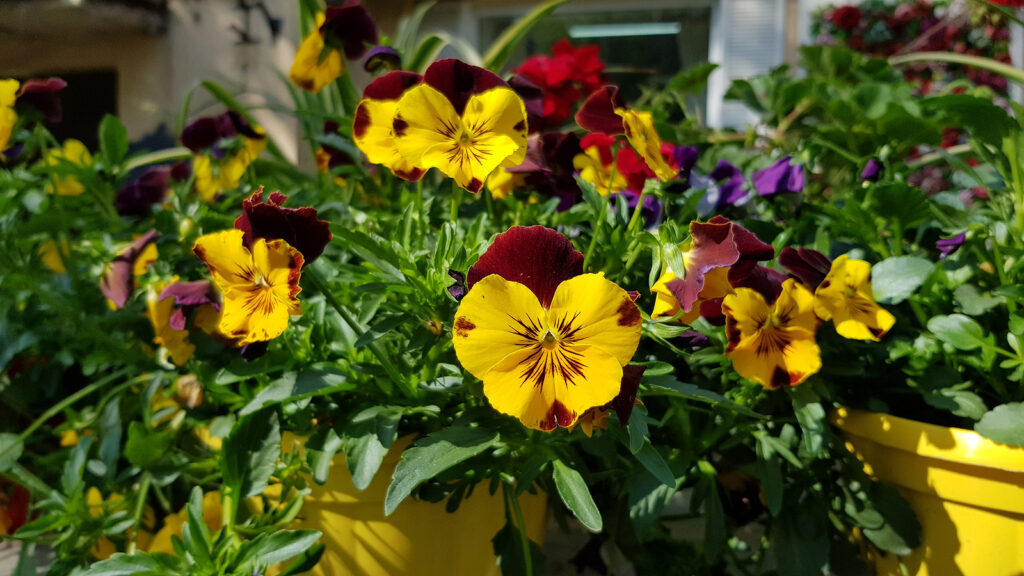Annuals are in the garden for one year or less. They grow from seed, reach full growth, flower, produce seed, and then die in a year or less.
Care of annuals is concentrated but not difficult. Fast-growing annuals need four basic things: watering, fertilizing, and deadheading. These basics will almost always ensure blossoms and repeat blossoms.
Watering annuals
- Annuals need evenly moist soil whether in the ground or in a container.
- Keep the soil moist for the first two or three weeks after planting.
- Once established, water according to the plant’s needs; some are moisture lovers, some prefer drier conditions.
- Perhaps the easiest way to water annuals in garden beds and borders is with a soaker hose which allows water to trickle into the soil slowing.
- Use a watering wand to water annuals in containers and hanging baskets.

Fertilizing annuals
- Fast-growing annuals need regular feeding.
- Add granular or powdered fertilizer to the soil ahead of planting.
- Liquid seaweed and fish emulsion are two liquid organic fertilizers that feed annuals almost immediately. Either applied as a foliar spray will be very fast-acting.
- All-purpose fertilizers such 5-10-5 or 15-30-15 will help annuals flower; organic fertilizers 3-4-3 or 4-5-4 will promote blooms and overall health; organic fertilizers are slower to act than synthetic fertilizers.
- Use water-soluble fertilizers for container plants.
Deadheading annuals
- Deadheading means to remove faded flowers before they develop seeds; if an annual flowering plant does not set seed, it will likely flower again. (Once an annual sets and drops seed, it will die.)
- Avoid simply removing the spent flower and leaving a bare stem when deadheading; remove the flower and its stem—follow the stem down to just above the next lower set of leaves and cut there.
- For plants with lots of small flowers such as lobelia or sweet alyssum, deadheading individual flower is all but impossible; these plants can be sheared back to leafy growth and they will bloom again.
- If you want an annual to self-sow or if you want to collect and save seeds to plant next year, do not deadhead. Allow these plants to flower and drop seed.
End-of-season care
- Pull up annuals as they fade and die at the end of their growing season.
- Compost spent annuals; if they are diseased or infested with pest insects put them in the trash.
- When the planting bed is empty, spread compost and aged manure across the bed to prepare for the next growing season.
- Cool-season annuals planted in late winter and spring can be replaced with warm-season annuals in late spring and early summer. Warm-season annuals can be replaced with cool-season annuals in autumn.
- Annuals in containers and window boxes should be removed at the end of their growing time. Scrub out the containers and store them or add new potting soil if you are planting again soon.
Also of interest:
Growing Annuals for Summer Bloom















